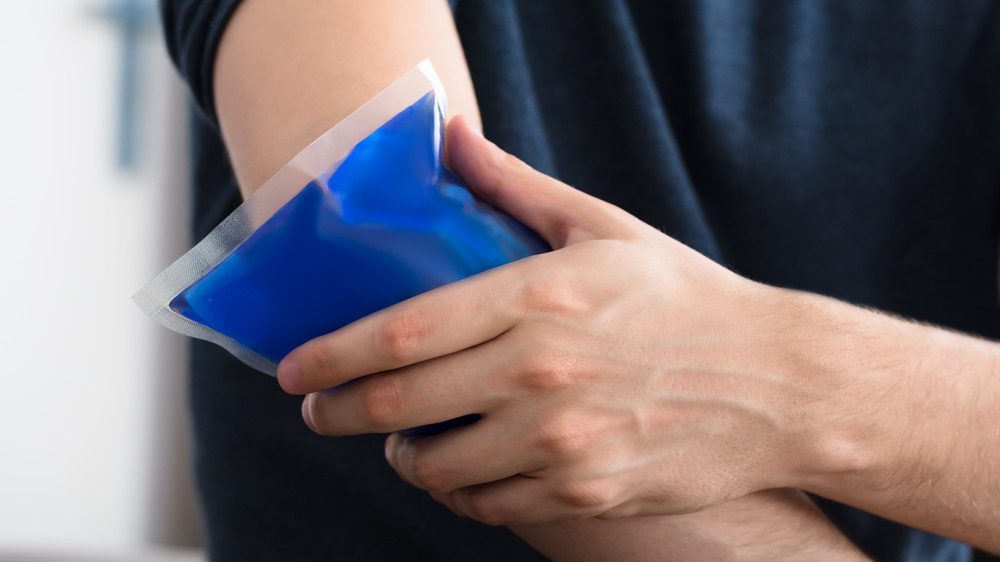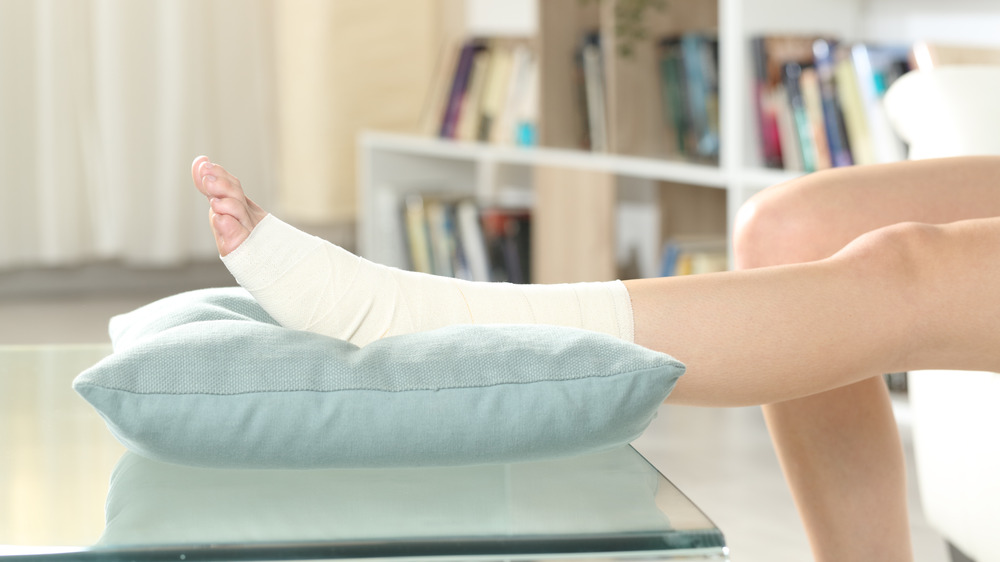Is The RICE Method Outdated?
A serious injury can not only be painful, but it can be career-ending for professional athletes. And while most of us don't — and probably won't ever — play professional sports, we're still susceptible to injuries. In fact, ankle sprains are one of the most common musculoskeletal injuries that doctors see every year (via Journal of Athletic Training). But a commonly prescribed treatment, the Rest, Ice, Compression, Elevation (RICE) method, may not be the best way to heal from an injury after all.
When your ankle or other soft connective tissue is injured, the RICE method is meant to treat inflammation. Fluid collection and swelling at sites of traumatic injuries can increase pain and slow down the healing process. The idea behind RICE is to reduce the metabolic demand at the injured site by slowing down blood flow to the area. It also helps to reduce the production of scar tissue at the injury by decreasing fluid build up. However, research by scientists in the Netherlands showed that there is not good evidence to show that RICE therapy is truly effective for helping ankle sprains heal. And even the doctor that coined the term RICE back in the 1970's has reversed course to say that ice may actually slow down healing instead of aiding it (via NewsGP).
RICE may hurt more than it helps
Some doctors even say that by applying ice to an injury, you not only reduce blood flow to the area, but you reduce the amount of immune cells that can get to the damaged tissue. This can prevent the immune system from doing its job to heal an injury. Resting an injured body part can also increase pain and decrease range of motion over time (via Europe PMC). Results from a study out of the Baylor College of Medicine showed that in the elbow injuries that were studied in the sample, early movement was the key factor in successful rehabilitation.
There is more research that needs to be done around the use of RICE as a healing method for musculoskeletal injuries, and more controlled studies might be able to give a more definitive answer about its effectiveness. If you think you may have injured yourself or you are in pain, it's a good idea to have a medical professional evaluate you so that they can suggest the best course of action for you and your specific issue.


